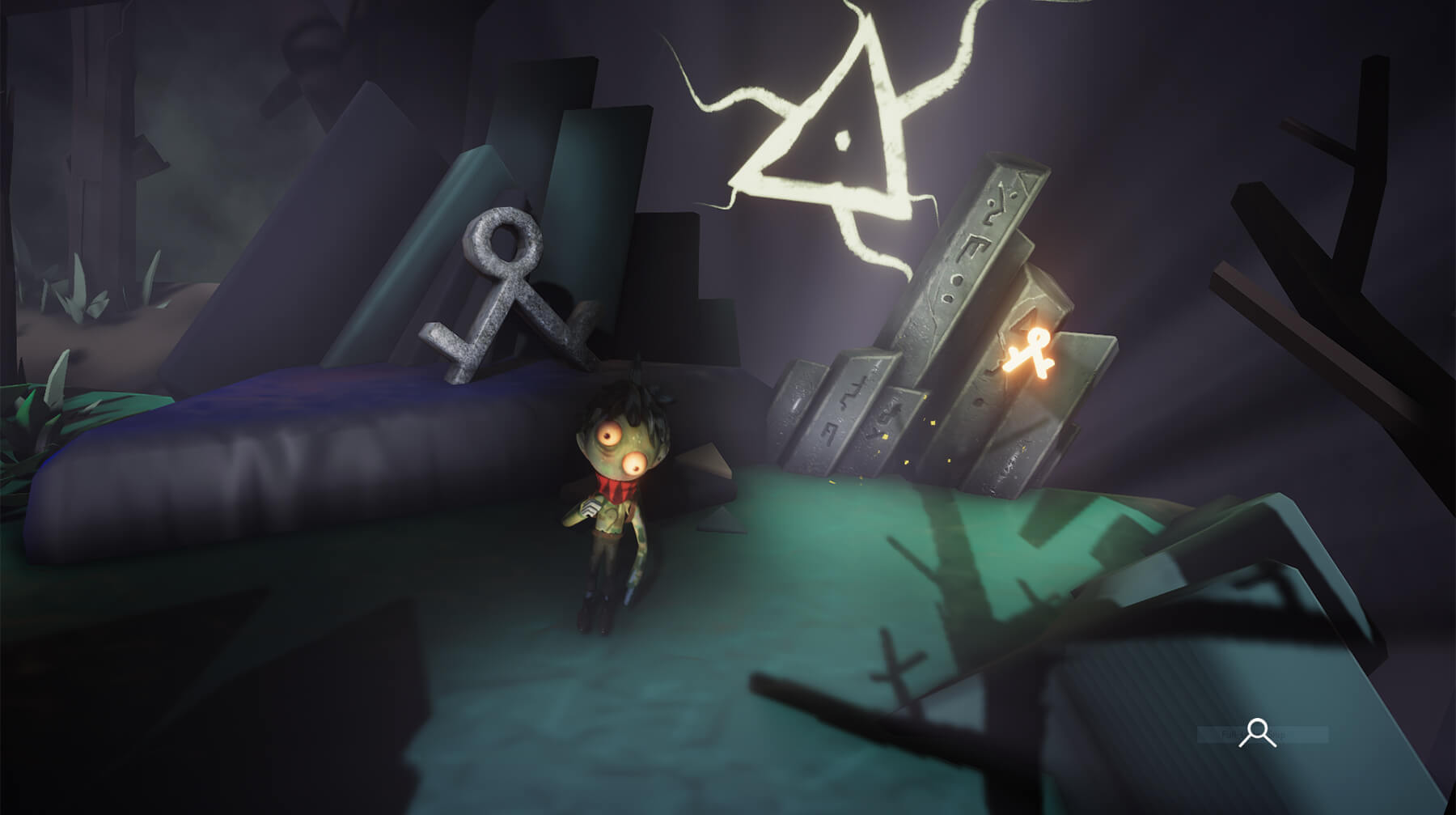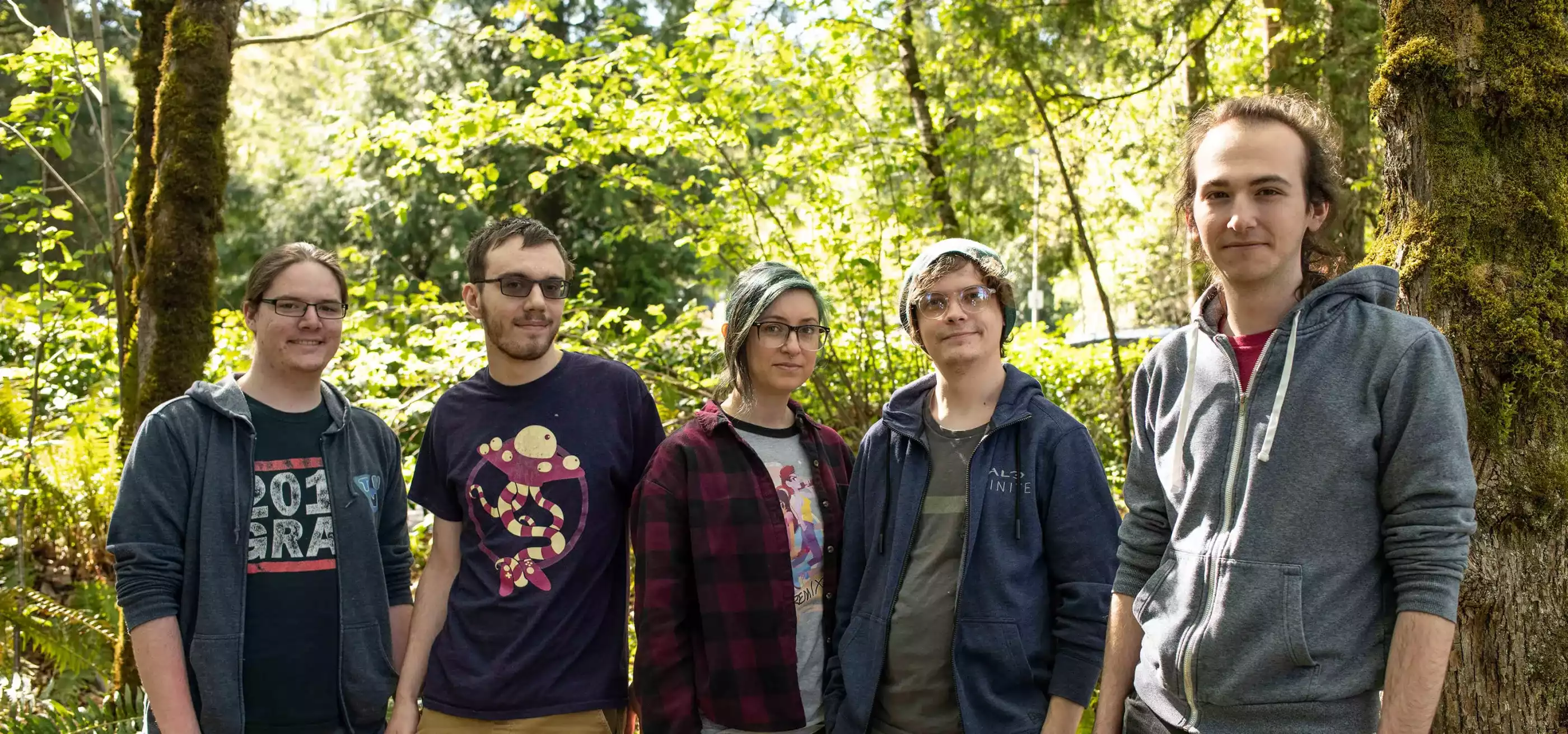The term “puzzle game” usually evokes images of falling Tetris blocks or the colorful shapes of match-three games like Candy Crush and Bejeweled that perennially sit atop the mobile download charts. But there’s another lineage of puzzle game, one where a strong sense of setting and environment is just as important — if not integral — to the puzzle mechanics that keep players hooked.
When recent graduates Will Podpechan (BFA in Digital Art and Animation) and Caleb Klomparens (BS in Computer Science and Digital Audio) were dreaming up ideas for their final student game the summer before their senior year, it was this latter lineage of puzzle games that called to them. They started to imagine something like Myst or The Witness, games that plop players into immersive, mysterious worlds that become puzzles unto themselves. “The environment definitely came first,” Klomparens says of the unique puzzle game the emerged from their final year at DigiPen, a game known today as The Pilgrim by student team Free Minds.
The seed idea for The Pilgrim wasn’t necessarily the puzzle mechanic that undergirds it — rather, it was a feeling. “I’m a fan of going for long walks out in the woods out here, out in the deep forest where you have really tall trees and this dense kind of atmosphere,” Podpechan, creative lead and technical artist on the team, says. “I kind of wanted to emulate that feeling through the game.”
One of the first elements that came together early on was the look of the game’s main character. A character design Podpechan had been playing with over the years — a mysterious blue-skinned wanderer with lopsided eyes — serendipitously reached a satisfying final iteration that same summer. He became the game’s eponymous protagonist, making his pilgrimage through an eerie, forest-like civilization full of floating islands, abstract triangles, and trees.
Boiled down to its core, The Pilgrim is a simple game of matching shapes, or as level designer Elliott Strait (BS in Computer Science and Game Design) puts it, “a 3D play on classic hidden-object games.” That simplicity was a conscious choice on Free Minds’ part.
“A lot of the game was designed to supplement exploring the environment and soundscape,” Klomparens, who served as the team’s audio tools programmer and sound designer, says. “That was kind of the main principle, to make some kind of mechanic that was not too distracting from taking in what the world was like.” Players match a set of runic symbols they collect in each section of the game to objects in the environment, many of which are tucked away in the nooks and crannies of The Pilgrim’s shrouded world. As players progress, the mechanic deepens, slowly adding layers of nuance and complexity to keep things fresh.
“We decided to use a fixed camera,” Strait, the sole junior on the team, says. “This allowed both me and Will to create artistic camera angles that showed off the level in a way that both captivated the player and ensured the objects they were looking for were in their line of sight.” Given that the puzzles are directly embedded in the world itself, Free Minds designed a creative pipeline that allowed art production and level design to be as tightly integrated as possible. That pipeline was created with the help of team producer Jason Murray (BS in Computer Science in Real-Time Interactive Simulation).
“First semester it was just a lot of figuring things out, making sure the way we were implementing things was extendable for Will and Elliott to iterate on,” Free Minds technical lead Jacob McPeak (BS in Computer Science in Real-Time Interactive Simulation) says. “During that first semester we got all of our levels done, which was really nice.”

The team got another morale boost at the end of that first semester.
“Will posted a GIF of the game during development at the end of first semester on Reddit on r/Unity, and it got 800 upvotes,” Free Minds plant artist and concept illustrator Rose Carlson (BFA in Digital Art and Animation) says.
“I was in disbelief when I first saw it,” Podpechan laughs. “I was like, oh, I guess this is something people are interested in.”
Once the second semester began, the team focused on putting the finishing touches on the cinematic experience of The Pilgrim, building out the look, feel, and lighting of the levels and bringing that together with its arresting soundscape.
“We wanted to reference [electronic music duo] Boards of Canada and their song ‘Beware the Friendly Stranger,’” Klomparens says. “That was the seed for pretty much every sound in the game. Ethereal, haunting, but calming.” The game’s warbling, otherworldly score works its way into the smallest details — when players drag runes from their inventory into the world, the cursor dynamically reacts by emitting ghostly, tape-warped hums.
The game’s high level of polish paid off. Since the game’s completion, the Free Minds graduating team members have landed jobs at 343 Industries, Amazon Game Studios, Nintendo, and Magic Leap. Even still, the team is planning to continue working on the game post-graduation, adding in even more details for a version they hope to release on Steam. “The end result was so interesting that Will is already considering a sequel,” Klomparens says mysteriously.
Podpechan quickly corrects him. “My official statement is, ‘This turned out well. I’m thinking of doing a follow-up project.’ I’ve already concepted some things,” Podpechan says. “I’m thinking on paper.”
